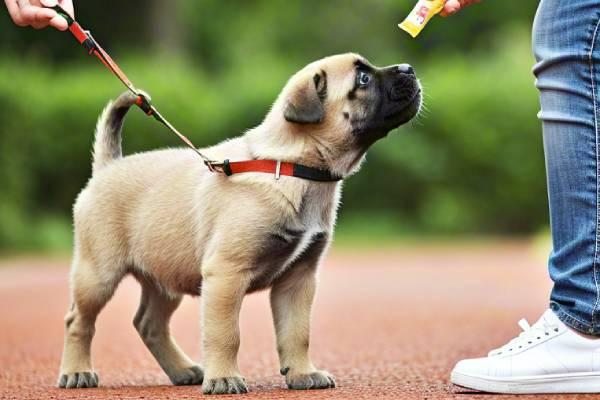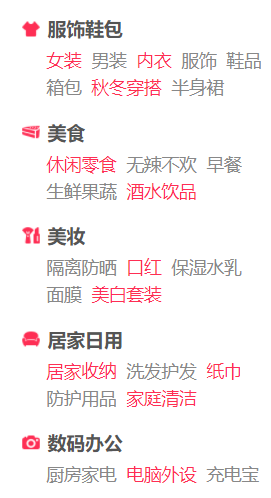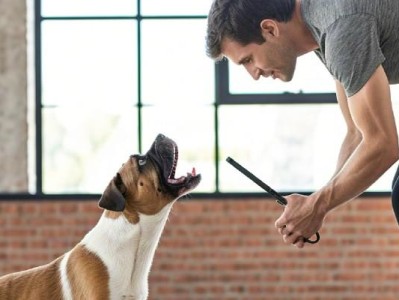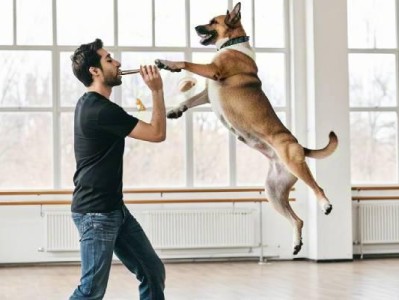Leash training is essential for ensuring your dog’s safety, building trust, and fostering enjoyable walks for both of you. A well-trained dog on a leash is less likely to bolt, lunge, or react to distractions, making outings stress-free. Here’s a step-by-step guide to leash training success:
1. Start with the Right Gear
Harness vs. Collar: Use a no-pull harness or front-clip harness to reduce pressure on your dog’s neck, especially for strong pullers. Avoid choke chains or prong collars, which can cause injury or fear.
Leash Length: A 4–6-foot leash provides control without restricting movement. Avoid retractable leashes, which encourage pulling and reduce communication.
Treat Pouch: Keep high-value treats (e.g., chicken, cheese) handy for rewards.
2. Teach Loose-Leash Walking Basics
The "Red Light, Green Light" Method:
Start in a low-distraction area (e.g., your backyard).
The moment your dog pulls, stop walking (red light). Stand still and wait until the leash slackens.
When your dog returns to your side or looks at you, say “Yes!” and reward (green light). Resume walking.
Repeat consistently to teach that pulling = no forward progress.
Use a Marker Word: Pair a verbal cue like “Let’s go” or “With me” with rewards when your dog walks calmly beside you.
3. Reinforce Focus and Engagement
Practice the “Watch Me” Command: Reward your dog for making eye contact during walks. This builds attention and reduces reactivity to distractions.
Change Directions: Randomly turn around or change pace to keep your dog mentally engaged and focused on you.
4. Tackle Common Challenges
Pulling Toward Smells/People: Stop immediately. Wait for your dog to relax, then reward and continue. Alternatively, use a “U-turn” to redirect their attention.
Lunging at Other Dogs: Create distance, use treats to redirect focus, and practice “sit” or “look at me” commands. Consider professional help for severe reactivity.
Overexcitement at Walk Time: Calm your dog with a “sit/stay” before attaching the leash. Only proceed when they’re settled.
5. Build Duration and Distractions Gradually
Start with short 5–10 minute sessions in quiet areas. Gradually introduce busier environments (parks, sidewalks) as your dog improves.
Reward frequently for good behavior, then slowly phase out treats as the habit solidifies.
6. Use Positive Reinforcement
Never yank, jerk, or punish your dog for pulling. This can create fear or aggression.
Reward calm behavior with treats, praise, or brief playtime. Make walking near you more rewarding than pulling ahead.
7. Practice Patience and Consistency
Leash manners take weeks or months to perfect, especially for energetic breeds. Celebrate small wins!
Enlist all family members to follow the same rules (e.g., no allowing pulling on weekends).
8. Advanced Tips
Heel Command: Train your dog to walk precisely at your left side using treats and a hand target.
Off-Leash Prep: Practice “emergency recalls” and long-line training in safe areas before attempting off-leash freedom.
Final Note: Leash training is more than physical control—it’s about communication. By teaching your dog to choose calm, focused behavior, you’ll build a lifelong bond and turn walks into joyful adventures.
Dog Leash Training Techniques: Effective Methods for a Calm, Controlled Walk
Leash training is a foundational skill for any dog, promoting safety, communication, and enjoyable outdoor experiences. Whether you’re teaching a puppy or retraining an older dog, these proven techniques will help you achieve loose-leash walking and reduce pulling, lunging, or distractions.
1. The "Stop-and-Go" (Red Light/Green Light) Method
Purpose: Teach your dog that pulling halts forward progress.
How to Do It:
Begin in a quiet, familiar area.
Start walking with your dog on a short leash.
When your dog pulls: Stop immediately and stand still (red light).
Wait patiently until the leash loosens (your dog steps back or looks at you).
Say “Yes!” or click a clicker, reward with a treat, and resume walking (green light).
Pro Tip: Consistency is key—repeat every time your dog pulls.
2. The "U-Turn" Technique
Purpose: Redirect attention and discourage pulling toward distractions.
How to Do It:
When your dog starts pulling toward something (e.g., a squirrel or another dog), calmly turn 180 degrees and walk the opposite direction.
Use a cheerful cue like “This way!” and reward your dog for following.
Gradually increase difficulty by practicing near mild distractions.
Pro Tip: Pair the U-turn with high-value treats to make following you more rewarding than the distraction.
3. The "Engagement and Focus" Approach
Purpose: Build your dog’s attention on you during walks.
How to Do It:
Carry treats and reward your dog frequently for checking in with you (eye contact or staying close).
Use a cue like “Watch me” or “With me” to prompt focus.
Randomly change directions or speed to keep your dog mentally engaged.
Pro Tip: Start in low-distraction environments and gradually add challenges like busier parks.
4. The "Heel" Command
Purpose: Train your dog to walk calmly at your side.
How to Do It:
Hold a treat in your hand at your hip (left side for traditional “heel”).
Lure your dog into position and say “Heel” as they walk beside you.
Reward every few steps for maintaining the position.
Gradually phase out the lure, using verbal praise and intermittent treats.
Pro Tip: Use a shorter leash (2–4 feet) for better control during heel training.
5. Positive Reinforcement for Loose Leash Walking
Purpose: Reward desired behavior to make it a habit.
How to Do It:
Mark and reward your dog whenever the leash is loose. Use a clicker or “Yes!”
Treat at your side or between your legs to encourage proper positioning.
Gradually increase the number of steps between rewards as your dog improves.
Pro Tip: Use high-value rewards (e.g., chicken, cheese) for high-distraction areas.
6. The "Circle Method" for Pullers
Purpose: Break the cycle of constant pulling.
How to Do It:
When your dog pulls, walk in a tight circle, guiding them back to your side.
Reward them for reorienting to you, then continue walking forward.
Repeat until your dog learns that pulling leads to confusion, not progress.
Pro Tip: Stay calm and avoid yanking the leash—gentle guidance works best.
7. Desensitization to Distractions
Purpose: Reduce reactivity to triggers (other dogs, cars, etc.).
How to Do It:
Identify your dog’s triggers and practice at a distance where they stay calm.
Reward calm behavior with treats and praise.
Gradually decrease the distance over multiple sessions.
Pro Tip: If your dog reacts, increase the distance and try again. Patience is critical.
8. Long-Line Training for Freedom
Purpose: Transition to off-leash reliability.
How to Do It:
Use a 15–30-foot training leash in safe, enclosed areas.
Allow your dog to explore while practicing recalls (“Come!”) and check-ins.
Reward compliance generously to reinforce listening even at a distance.
Pro Tip: Never rush off-leash training—build trust and reliability first.
9. The "Penalty Yard" Technique
Purpose: Teach impulse control at the start of walks.
How to Do It:
If your dog bolts out the door or pulls excessively, immediately turn around and go back inside.
Wait 30 seconds, then try again. Repeat until your dog exits calmly.
Pro Tip: Pair this with a “Wait” or “Easy” cue before exiting doors.
10. Play-Based Training
Purpose: Make walks fun and rewarding.
How to Do It:
Incorporate short play sessions (fetch, tug) during walks for dogs that lose interest.
Use toys as rewards for good leash behavior.
Pro Tip: Ideal for high-energy breeds that need mental and physical stimulation.
Troubleshooting Common Issues
Pulling: Use a front-clip harness to reduce leverage and practice the “stop-and-go” method.
Lunging: Create space from triggers and reward calm behavior. Consider a “focus” command.
Overexcitement: Start walks after a brief play session to burn off energy.
Key Principles for Success
Consistency: Everyone in the household must enforce the same rules.
Patience: Progress takes time—celebrate small improvements.
Short Sessions: Train in 5–10 minute increments to avoid frustration.
End on a Positive Note: Always finish with a success, even if it’s a small one.
Final Note: Leash training is a journey, not a race. By prioritizing positive reinforcement and clear communication, you’ll strengthen your bond and create a dog that walks politely in any environment. For persistent challenges, consult a certified dog trainer or behaviorist.
推荐本站淘宝优惠价购买喜欢的宝贝:
本文链接:https://sg.hqyman.cn/post/9697.html 非本站原创文章欢迎转载,原创文章需保留本站地址!


 微信支付宝扫一扫,打赏作者吧~
微信支付宝扫一扫,打赏作者吧~
